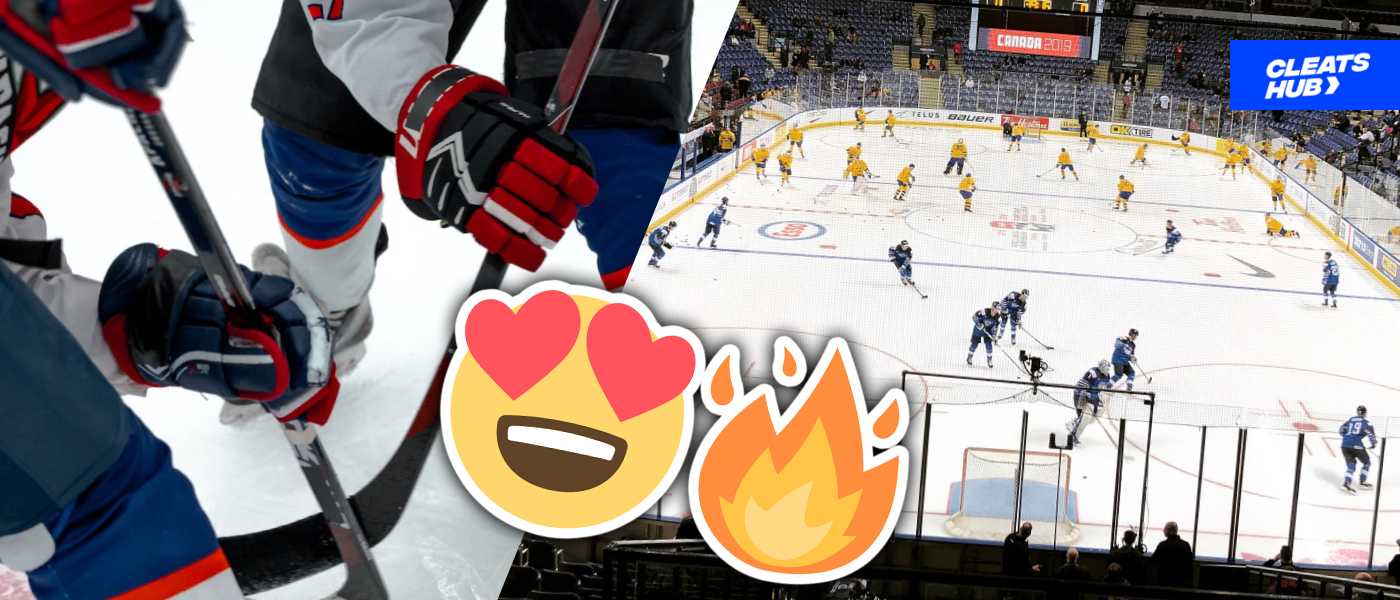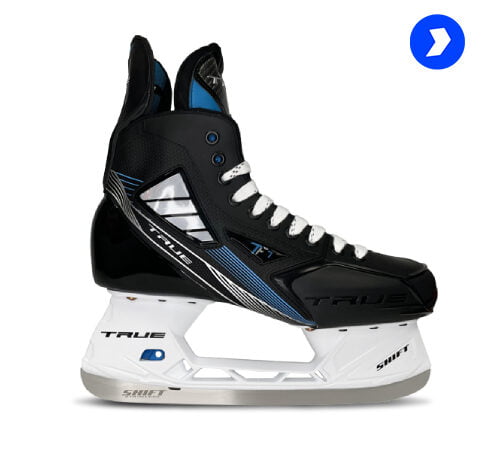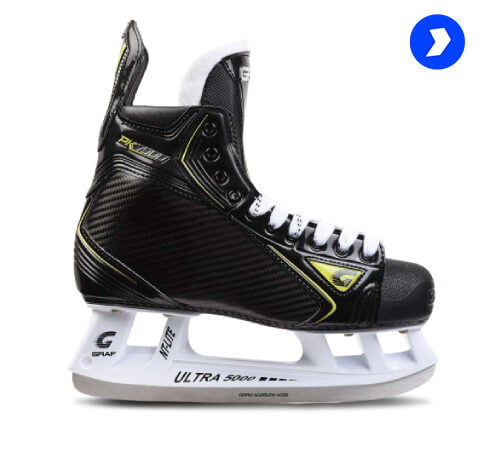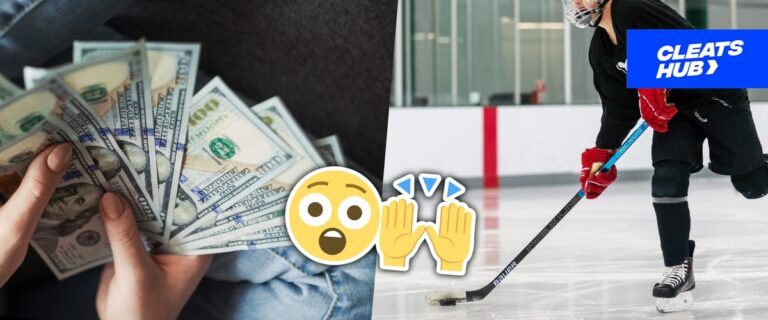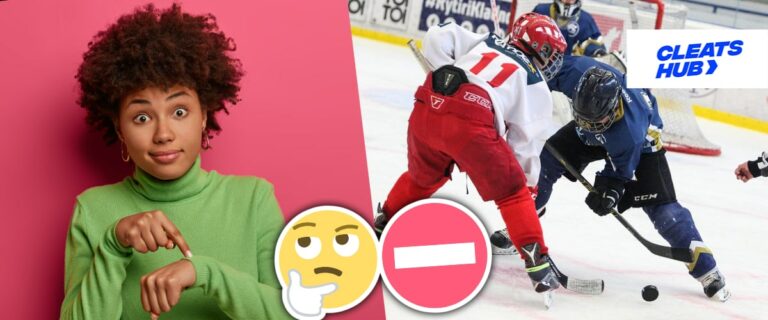Trapezoid In Ice Hockey: History, Rules & Penalties
Have you ever heard of the term “trapezoid” or “trapezoid rule”? The NHL is constantly developing new rules to make ice hockey games more exciting and fun-filled. The trapezoid in ice hockey was only recently added to the league and is currently in use. So what is a trapezoid?
What Is A Trapezoid In Ice Hockey?

A trapezoid in ice hockey is a section of the ice at the back of the red goal line on each side of the goaltender’s net that highlights the region where a goaltender can handle the puck when he is behind the goal line.
Why is it called a trapezoid?
It is called a trapezoid because the section is shaped like a trapezium (a parallelogram with one pair of parallel lines). So the name was derived from the trapezium’s shape, also called a trapezoid.
This trapezoid in ice hockey begins a few feet away from the goal net on both sides and extends to the end of the board.
History Of Trapezoid In The NHL
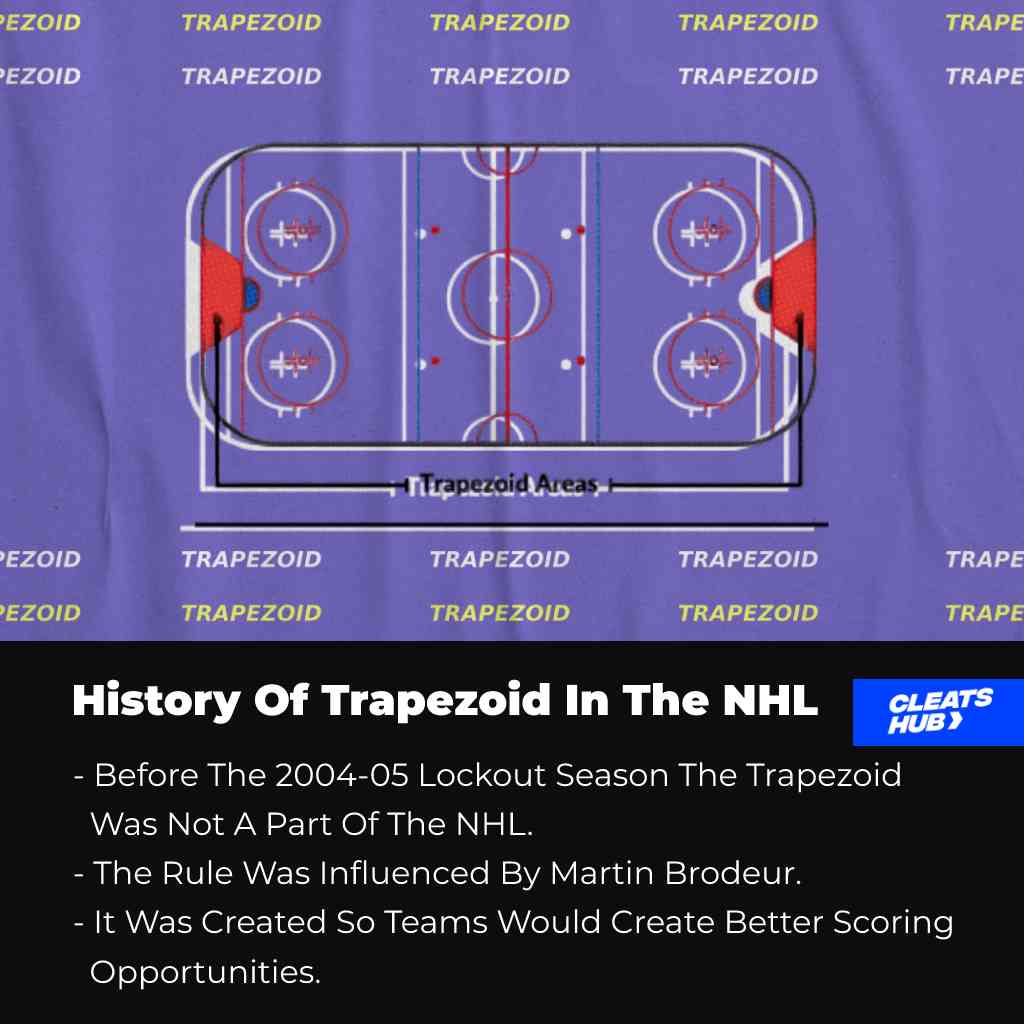
The goalie’s trapezoid had not yet been drawn before the NHL’s 2004–05 lockout season. Back then, goalies were free to enter the goal area and play the puck from any position.
But it was a New Jersey Devils goaltender who had a major impact on the trapezoid’s adoption by the NHL (Martin Brodeur).
The neutral zone trap, which offered minimal offensive value but was great for defense, was adopted by NHL clubs in the 1990s. The neutral zone trap surrounds the area with defenders, focusing the entire game on the neutral zone.
In the defensive zone, the goalie’s job was to direct the puck and shoot it back to the defenders. Nowadays, it is customary for the players on the other team to sprint for the puck when a member of the opposing team tosses the puck into the corner end of the goal line of the opponent.
Earlier in the year, though, this was a different situation because goalies could travel from their net to the corners at the back of the goal line to grab the puck. This implied that whenever the puck was thrown in, the goalkeeper would almost surely be in control of it and could quickly pass it to a defenseman.
However, because players mostly capitalized on their opponent’s mistakes to try to score goals, the NHL said that it rendered the game uninteresting. The league felt that there were fewer goals scored per game and that no individuals had spectacular attacking performances.
Martin Brodeur And The NHL
Brodeur is one of the best goalkeepers in the NHL and is the major reason the trapezoid was added to the ice rink.
Martin Brodeur was an exceptional goalie in his time. He wasn’t only good as a goalie but was also very good at puck handling and control. This skill he developed made him very good at retrieving and moving with the puck.
Puck handling is a skill many goalies are not good at. Therefore, his ability to do that, move with the puck, and retrieve any puck sent past the goal line led to his two Stanley Cup wins with the New Jersey Devils.
Brodeur was practically a third defenseman because of his skill. This also made the New Jersey Devils very effective at the neutral zone trap.
At the time, Brodeur was the best goalie in the NHL and still holds the record for most wins (691) and most shootouts (125) in his career. At that time, many players had the same gameplay as Brodeur, but he was the best at the time.
When the trapezoid rule was added after the 2004-05 lookout season, Martin Brodeur had this to say:
You can’t be happy, taking away something I’ve worked on all my life to do and help my teammates and help my defence. It’s just part of me playing the puck. So, definitely, you can’t be happy.
Martin Brodeur (The New York Times)
The 2004-05 Lockout Season
The NHL added a few new regulations to the game during the collective bargaining agreement for 2004–2005. The trapezoid rule and the area behind the goal line on the ice were two of them.
The NHL adopted this as a rule with the primary goal of increasing scoring opportunities and goal totals. eventually resulting in a game with greater excitement and fun.
NHL Trapezoid Rules
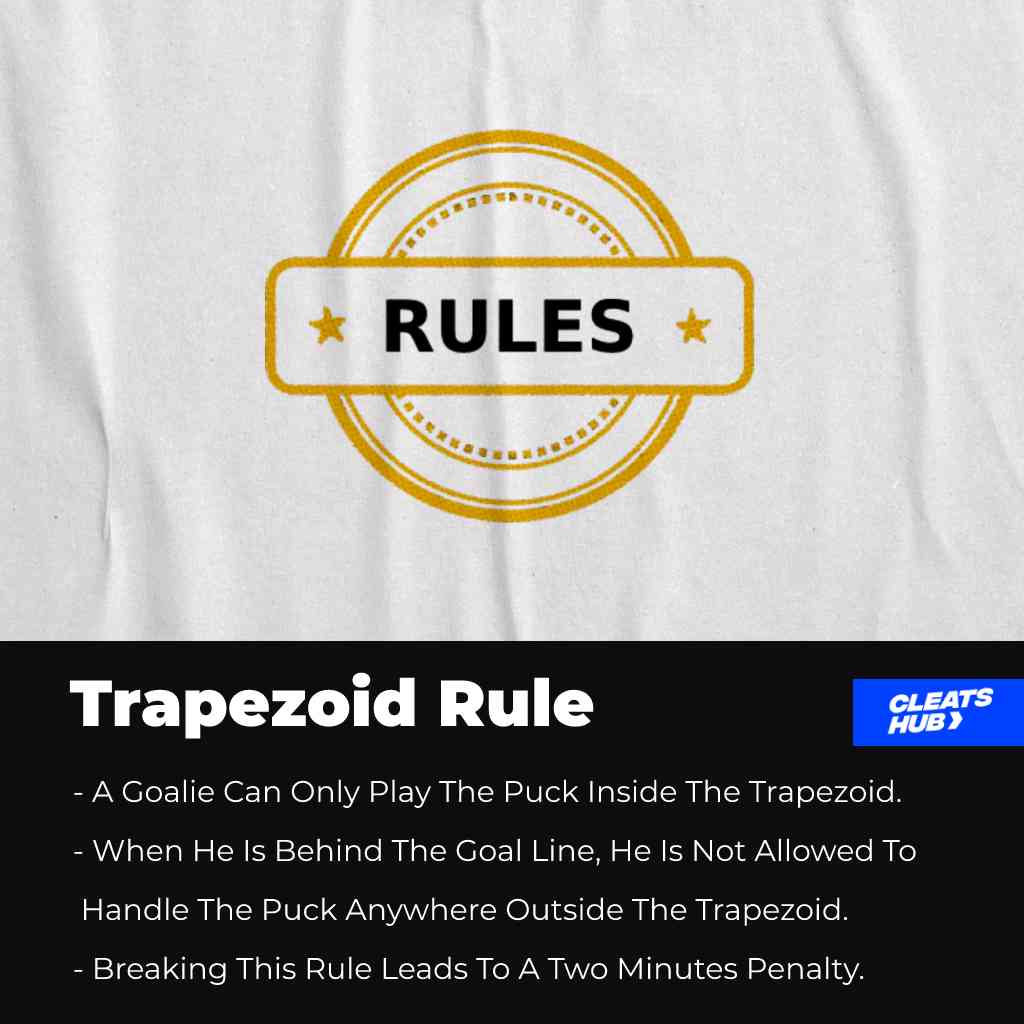
The trapezoid rules in the NHL state that a goalie is only allowed to play the puck inside the trapezoid whenever the puck crosses the goal line. This means that the goalie must not handle the puck at the sections of ice at the back of the goal line that are not within the trapezoid.
27.8 Restricted Area – A goalkeeper shall not play the puck outside of the designated area behind the net. This area shall be defined by lines that begin six feet (6’) from either goal post and extend diagonally to points twenty-eight feet (28’) apart at the end boards.
NHL Rule Book
Read more on: NHL Fighting Rule – The Unwritten NHL Rule
NHL Trapezoid Penalty
The penalty for a goalie who plays the puck while it is outside the trapezoid zone at the back of the goal line is a 2-minute minor penalty. However, since goalies are not sent to the penalty box for infractions, a player from his team goes to the penalty box.
This leads to a power play for the opposing team.
Significance Of The Trapezoid Rule
Two things can be learned from the invention of the trapezoid and its laws.
First, teams were passively waiting for opportunities to score on errors made by the opposition, which was the primary justification for its original inclusion in the NHL.
The NHL places a lot of emphasis on players showcasing their potential and great skill, therefore this had the effect of preventing them from doing so. The neutral zone trap, which was more of a defensive play in the own game, provided very little to no excitement for attackers because it was the foundation of the game.
The trapezoid’s increased scoring opportunities and heightened excitement are its second major significance. Low goal totals per game were the norm prior to the trapezoid.
The NHL thinks that by implementing the trapezoid rule, scoring chances and goals will rise. Also, according to the league, this will make its games more exciting and entertaining.
Argument Against Trapezoid In Ice Hockey
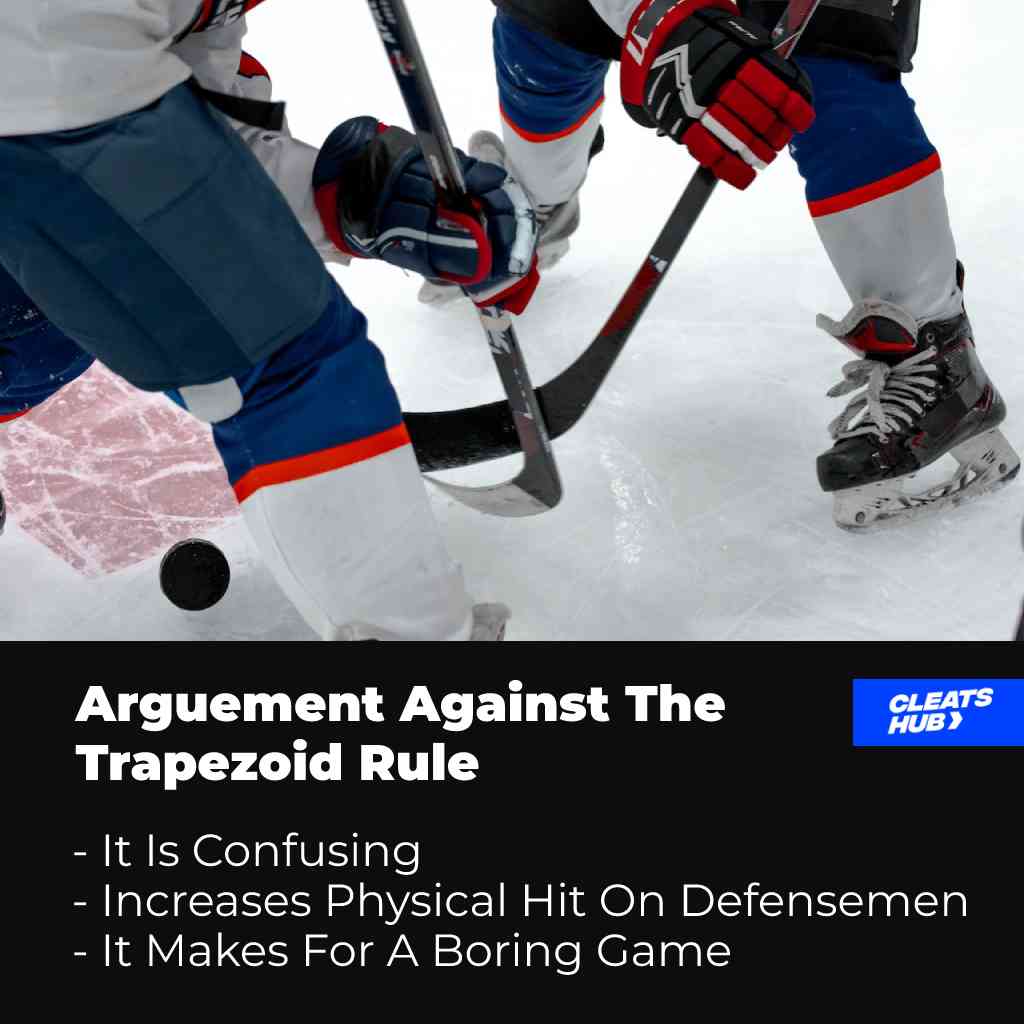
There are arguments and disputes about introducing trapezoids on the ice rink and in the NHL rule book. Some of the arguments used against trapezoids include the following:
It Is Confusing
The extra trapezoid lines are confusing to novice viewers and even game officials, according to ice hockey spectators who feel that there are already enough lines on the ice.
There have been cases where goalies who the referees felt violated the trapezoid rule were given the incorrect penalty. In addition, given the wide range of other lines on the ice, novice ice hockey viewers might not comprehend the significance of the trapezoid.
Increases Physical Hit On Defensemen
When the puck is dumped, the defenseman must pursue it because the goalkeeper cannot go after it. As a result, they are subject to harsh bodychecking and side-boarding penalties.
This is because the opposing team is skating at full speed directly behind them as they pursue the puck. The defenseman can easily get pushed into the sideboards if he does not move with the ball swiftly.
In other words, it causes more defensemen injuries.
Creates A Boring Game
Fans don’t find hockey games that focus primarily on dumping and pursuing the puck to be all that exciting. This is due to the fact that it prevents players from coming up with original offensive plays.
Regrettably, the dump-and-chase tactic is supported by the trapezoid rule. Players are encouraged to keep playing because a goalie cannot pursue the puck once it passes the goal line.
Also, the frequent stoppages caused by penalties for dumping and pursuing the puck make the game boring and uninteresting.
Conclusion
This concludes the NHL’s use of trapezoids. The NHL will keep introducing rules and restrictions to make sure that game enthusiasts enjoy each and every game. There will also be implementations to guarantee that the game becomes well-liked and spreads as broadly as possible.
These rules’ effectiveness and success don’t always pan out, though. And thus rules alter, among other things.
Because of this, it’s possible that the trapezoid rule will evolve, vanish, or remain in place. Only time will tell. Yet as a fan of ice hockey, being aware of its principles and regulations is advantageous.
Psstt…. The Top Performing Cleats

